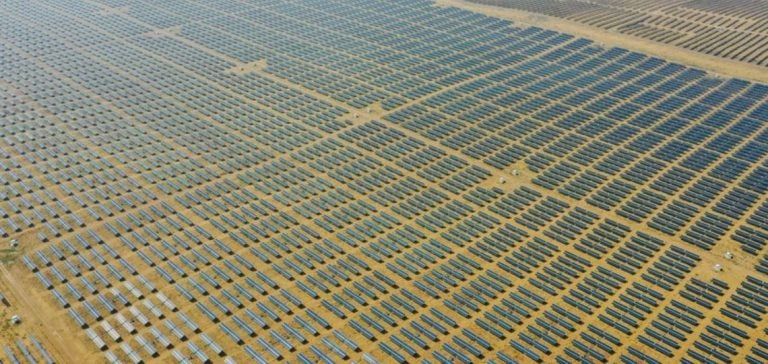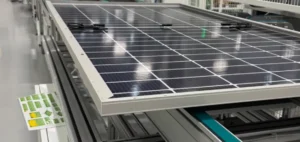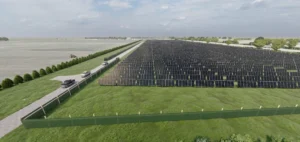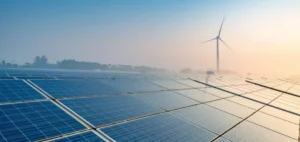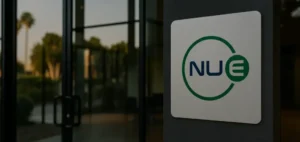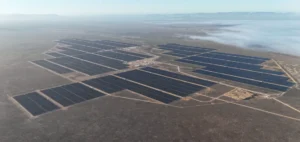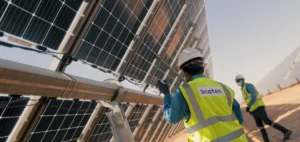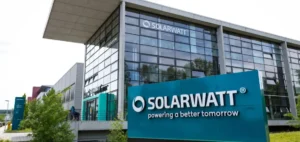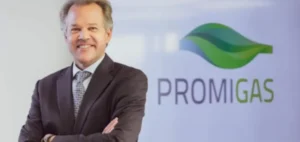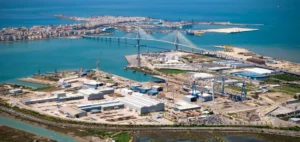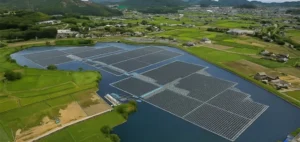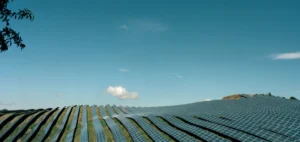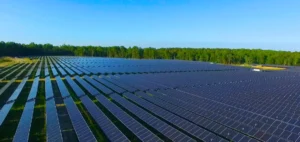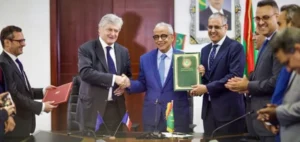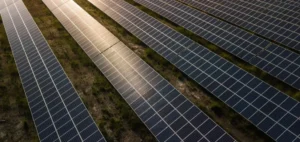The Kubuqi desert in Inner Mongolia is a key area in China’s energy strategy.
Once dubbed the “Sea of Death” because of its aridity, this region is now seeing the deployment of large-scale photovoltaic projects. China’s energy transition, in particular the decarbonization of its energy mix, relies on solar projects like Kubuqi to diversify its energy sources and reduce dependence on fossil fuels.
The area’s flagship project, the Dalad solar power plant, is one of the country’s largest.
With an installed capacity of 1 million kilowatts, it produces around 2 billion kilowatt-hours of electricity per year, equivalent to the annual consumption of several hundred thousand urban households.
As well as producing energy, the project also aims to stabilize sand dunes and improve soil management, by integrating agricultural activities beneath the solar panels.
Photovoltaics and soil restoration: a multifunctional model
Solar initiatives in the Kubuqi desert are distinguished by their multifunctional approach.
Not only is energy production optimized, but degraded soils are also restored.
Underneath the photovoltaic structures, agricultural crops ranging from fruit and vegetables to fodder grasses are planted, offering a second use for the reclaimed land.
This agrovoltaic technique stabilizes the environment while increasing agricultural yields.
As part of the Dalad project, the rehabilitated desert land covers more than 3,300 hectares, offering the prospect of sustainable development for the region.
In Hanggin Banner, a similar solar power plant is also applying this method, demonstrating the ability of such infrastructures to contribute to the local economy while also participating in the national decarbonization effort.
Ordos: from coal to green hydrogen
The city of Ordos, once considered one of China’s coal hubs, is redefining its role in the country’s energy transition.
Kubuqi’s solar projects, together with other wind power and hydrogen storage projects, illustrate this shift towards cleaner energies.
Synergies between solar, wind and green hydrogen energies are at the heart of Ordos’ new energy model.
The electricity generated by these plants is either fed directly into the grid or used to produce hydrogen.
This integration not only meets the growing demand for clean electricity, but also provides a solid foundation for the decarbonization of the region’s energy and industrial sectors.
The challenges and prospects of energy development
Integrating solar infrastructure in a desert environment such as Kubuqi is not without its challenges.
Extreme climatic conditions, panel maintenance requirements and the management of reclaimed land all call for high-level investment and expertise.
However, these projects benefit from significant support from the Chinese government, which is banking on renewable energies to meet its climate targets by 2060.
These initiatives are part of China’s national strategy to reach peak emissions by 2030, with a surge in solar, wind and hydrogen power.
By investing heavily in projects such as Kubuqi and Ordos, China aims to diversify its energy sources, while reducing its greenhouse gas emissions.
An energy transformation with international implications
The expansion of solar projects in China, particularly in historically coal-dependent regions such as Ordos, will have significant implications for the global energy market.
These investments in renewable energies strengthen China’s position as a world leader in solar and wind power generation, while reducing its dependence on imported coal and gas.
Large-scale infrastructure projects, such as the Dalad and Hanggin Banner power plants, are part of this transformation.
Clean electricity production capacity is growing considerably every year, bringing significant economic and industrial benefits to the region and the country.
Indeed, China remains one of the world’s leading manufacturers of solar panels, and this dynamic is helping to consolidate its leadership in this field.
The extension of solar projects to other arid regions of the country could offer similar opportunities, with significant potential for industrial development.
The diversification of China’s energy sources is well underway, and the Kubuqi and Ordos projects mark a major turning point in the country’s energy transition.


